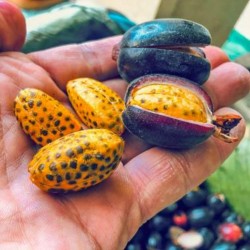Menu
-
MenuBack
- Home
-
Categories
-
-
Categories
-
Vegetable Seeds
-
Varieties by Country
- Varieties from Armenia
- Varieties from BiH
- Varieties from Croatia
- Varieties from France
- Varieties from Germany
- Varieties from Greece
- Varieties from Hungary
- Varieties from India
- Varieties from Italy
- Varieties from Japan
- Varieties from North Macedonia
- Varieties from Peru
- Varieties from Russia
- Varieties from Serbia
- Varieties from Slovenia
- Varieties from Spain
- Varieties from Thailand
- Varieties from Turkey
- Varieties from USA
- Tomato Seeds
- Corn Seeds
- Gourd family
- Bean family
- Cucumber Seeds
- Pepper Seeds
- Carrot family
- Onion family
- Lettuce Seeds
- Potato family
- Cabbage family
- Radish Seeds
- Beetroot family
- Watermelon Seeds
- Melon Seeds
- Cauliflower Seeds
- Sunflower family
-
Varieties by Country
- Fruit Seeds
- Chili - Habanero Seeds
- Medicinal Herb Seeds
- Climbing Plants Seeds
- Trees Bonsai Seeds
- Palm Seeds
- Ornamental Grasses Seeds
- Tobacco Seeds
-
Vegetable Seeds
-
-
-
-
- NEW PRODUCTS
- Create account
- Delivery - Payment
- FAQ
Last Product Reviews
Out of the two seeds, one germinated and the other one was dead and floatin...
By
 Riikka H on 07/03/2024
Riikka H on 07/03/2024
Verified Purchase
There are 347 products.
Showing 316-330 of 347 item(s)
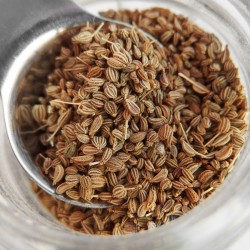
Ajwain, ajowan Seeds...
Price
€1.85
(SKU: MHS 136)
Seeds Gallery EU,
5/
5
<h2><strong>Ajwain, ajowan Seeds (Trachyspermum ammi)</strong></h2>
<h2><span style="color: #ff0000;" class=""><strong>Price for Package of 100 seeds. </strong></span></h2>
<div class=""><b style="color: #202122; font-size: 14px;">Ajwain</b><span style="color: #202122; font-size: 14px;">,<span> </span></span><b style="color: #202122; font-size: 14px;">ajowan</b><sup id="cite_ref-oed_3-0" class="reference" style="color: #202122; font-size: 11.2px;"></sup><span style="color: #202122; font-size: 14px;"><span> </span>(</span><span class="rt-commentedText nowrap" style="color: #202122; font-size: 14px;"><span class="IPA nopopups noexcerpt">/<span><span title="/ˈ/: primary stress follows">ˈ</span><span title="/æ/: 'a' in 'bad'">æ</span><span title="/dʒ/: 'j' in 'jam'">dʒ</span><span title="/ə/: 'a' in 'about'">ə</span><span title="'w' in 'wind'">w</span><span title="/ɒ/: 'o' in 'body'">ɒ</span><span title="'n' in 'nigh'">n</span></span>/</span></span><span style="color: #202122; font-size: 14px;">), or<span> </span></span><i style="color: #202122; font-size: 14px;"><b>Trachyspermum ammi</b></i><span style="color: #202122; font-size: 14px;">—also known as<span> </span></span><b style="color: #202122; font-size: 14px;">ajowan caraway</b><span style="color: #202122; font-size: 14px;">,<span> </span></span><b style="color: #202122; font-size: 14px;">thymol seeds</b><span style="color: #202122; font-size: 14px;">,<span> </span></span><b style="color: #202122; font-size: 14px;">bishop's weed</b><span style="color: #202122; font-size: 14px;">, or<span> </span></span><b style="color: #202122; font-size: 14px;">carom</b><span style="color: #202122; font-size: 14px;">—is an<span> </span></span>annual<span style="color: #202122; font-size: 14px;"><span> </span></span>herb<span style="color: #202122; font-size: 14px;"><span> </span>in the family<span> </span></span>Apiaceae<span style="color: #202122; font-size: 14px;">.</span><span style="color: #202122; font-size: 14px;"><span> </span>Both the leaves and the<span> </span></span>seed<span style="color: #202122; font-size: 14px;">‑like<span> </span></span>fruit<span style="color: #202122; font-size: 14px;"><span> </span>(often mistakenly called seeds) of the plant are consumed by humans. The name "</span>bishop's weed<span style="color: #202122; font-size: 14px;">" also is a common name for other plants. The "seed" (i.e., the fruit) is often confused with<span> </span></span>lovage<span style="color: #202122; font-size: 14px;"><span> </span>"seed".<br /><br /><span>Ajwain's small, oval-shaped, seed-like fruits are pale brown </span>schizocarps<span>, which resemble the seeds of other plants in the family Apiaceae such as </span>caraway<span>, </span>cumin<span> and </span>fennel<span>. They have a bitter and pungent taste, with a flavor similar to </span>anise<span> and </span>oregano<span>. They smell almost exactly like </span>thyme<span> because they also contain </span>thymol<span>, but they are more aromatic and less subtle in taste, as well as being somewhat bitter and pungent. Even a small number of fruits tends to dominate the flavor of a dish.</span><br /><br /></span>
<h2 style="color: #000000; font-size: 1.5em;"><span class="mw-headline" id="Cultivation_and_production">Cultivation and production</span></h2>
<p>The plant is mainly cultivated in<span> </span>Iran<span> </span>and<span> </span>India.<sup id="cite_ref-Green2006_5-2" class="reference" style="font-size: 11.2px;"></sup></p>
<h2 style="color: #000000; font-size: 1.5em;"><span class="mw-headline" id="Culinary_uses">Culinary uses</span></h2>
<p>The fruits are rarely eaten raw; they are commonly<span> </span>dry-roasted<span> </span>or fried in<span> </span>ghee<span> </span>(clarified butter). This allows the spice to develop a more subtle and complex aroma. It is widely used in the<span> </span>cuisine of the Indian subcontinent, often as part of a<span> </span>chaunk<span> </span>(also called a<span> </span><i>tarka</i>), a mixture of spices - sometimes with a little chopped garlic or onion - fried in oil or clarified butter, which is used to flavor a dish at the end of cooking. It is also an important ingredient for herbal medicine practiced there. In<span> </span>Afghanistan, the fruits are sprinkled over bread and biscuits.<sup id="cite_ref-Davidson2014_6-0" class="reference" style="font-size: 11.2px;"></sup></p>
<h2 style="color: #000000; font-size: 1.5em;"><span class="mw-headline" id="As_a_medication">As a medication</span></h2>
<p>There is little high-quality<span> </span>clinical evidence<span> </span>that ajwain has anti-disease properties in humans.<sup id="cite_ref-drugs_7-0" class="reference" style="font-size: 11.2px;">[7]</sup><span> </span>Ajwain is sold as a<span> </span>dietary supplement<span> </span>in<span> </span>capsules, liquids, or powders.<sup id="cite_ref-drugs_7-1" class="reference" style="font-size: 11.2px;">[7]</sup><span> </span>An<span> </span>extract<span> </span>of bishop's weed is manufactured as a<span> </span>prescription drug<span> </span>called<span> </span>methoxsalen<span> </span>(<i>Uvadex</i>,<span> </span><i>8-Mop</i>,<span> </span><i>Oxsoralen</i>) provided as a<span> </span>skin cream<span> </span>or oral capsule to treat<span> </span>psoriasis, repigmentation from<span> </span>vitiligo, or skin disorders of<span> </span>cutaneous T-cell lymphoma.<sup id="cite_ref-drugs_7-2" class="reference" style="font-size: 11.2px;">[7]</sup><sup id="cite_ref-drugs-meth_8-0" class="reference" style="font-size: 11.2px;">[8]</sup><span> </span>Because methoxsalen has numerous interactions with<span> </span>disease-specific drugs, it is prescribed to people only by experienced<span> </span>physicians.<sup id="cite_ref-drugs-meth_8-1" class="reference" style="font-size: 11.2px;"></sup></p>
<p>Ajwain is used in<span> </span>traditional medicine<span> </span>practices, such as<span> </span>Ayurveda, in<span> </span>herbal blends<span> </span>in the belief it can treat various disorders.<sup id="cite_ref-drugs_7-3" class="reference" style="font-size: 11.2px;"></sup><sup id="cite_ref-9" class="reference" style="font-size: 11.2px;"></sup><span> </span>There is no evidence or regulatory approval that oral use of ajwain in herbal blends is effective or safe.<sup id="cite_ref-drugs_7-4" class="reference" style="font-size: 11.2px;"></sup></p>
<h3 style="color: #000000; font-size: 1.2em;"><span class="mw-headline" id="Adverse_effects">Adverse effects</span></h3>
<p>Women who are pregnant should not use ajwain due to potential<span> </span>adverse effects<span> </span>on fetal development, and its use is discouraged while breastfeeding.<sup id="cite_ref-drugs_7-5" class="reference" style="font-size: 11.2px;"></sup><span> </span>In high amounts taken orally, bishop's weed is considered to be<span> </span>toxic<span> </span>and can result in fatal poisoning.<sup id="cite_ref-drugs_7-6" class="reference" style="font-size: 11.2px;"></sup></p>
<h3 style="color: #000000; font-size: 1.2em;"><span class="mw-headline" id="Essential_oil">Essential oil</span></h3>
<p>Hydrodistillation<span> </span>of ajwain fruits yields an<span> </span>essential oil<span> </span>consisting primarily of<span> </span>thymol,<span> </span>gamma-terpinene,<span> </span>p-cymene, and more than 20 trace compounds which are predominantly<span> </span>terpenoids.</p>
</div>
<script src="//cdn.public.n1ed.com/G3OMDFLT/widgets.js"></script>
MHS 136 (100 S)


Variety from India
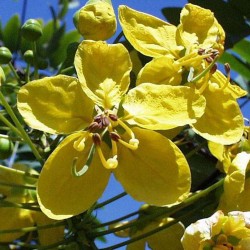
Chaksu, Jasmejaaz Seeds...
Price
€1.95
(SKU: MHS 95)
Seeds Gallery EU,
5/
5
<h2><strong>Chaksu, Jasmejaaz Seeds (Cassia absus)</strong></h2>
<h2><span style="color: #ff0000;"><strong>Price for Package of 10 seeds. </strong></span></h2>
Annual herb, to 60 cm, glandular-hairy. Leaves: petiole to 4 cm, without a gland; leaves with 2 pairs of opposite leaflets with a gland on the rhachis between each pair. Inflorescences terminal. Petals 5-6 mm, yellow, orange, salmon, or pinkish-red with reddish-brown veins. Stamens 5, subequal; filaments straight. Pod 3-6 cm, flat.<br><br>Seeds contain alkaloids that have powerful actions on the nervous and vascular systems and are used accordingly for a variety of purposes in folk medicine.<br><br>In disturbed grassland or open woodland, also on roadsides, riverine alluvium, and formerly cultivated areas.<br><br>Widespread in the tropics and subtropics.<br><br>Health Benefits of Cassia Absus Seed<br><br>Due to the sudden increase in the number of chaksu seed buyers, the commercial cultivation of this medicinal plant is seriously being considered by farmers and those involved in the production of ayurvedic medicines. This is an Indian medicinal herb belonging to the Caesalpiniaceae family of plants. Also known as Cassia Absus, Chaksu seeds have many medicinal properties making them one of the most sought-after ayurvedic herbs that can be used in the form of decoction, powder, and even juice.<br><br>Chaksu Seeds for Lowering Blood Pressure<br><br>What makes these seeds really popular, is their ability to lower blood pressure. Acting as a hypotensive agent, this humble seed works wonders for those looking to control their BP naturally. It is a strong anti-bacterial agent and works as an astringent. It is also full of many phytochemicals such as alkaloids, essential fatty acids, and sterols. It is available in the form of seeds and Chaksu oil.<br><br>Medicinal Properties of Chaksu Seeds<br><br>These seeds are highly effective in treating common coughs.<br>You can get rid of ringworms by mixing Jasmezaaj seed paste in oil and applying it directly over the affected area.<br>The same oil can be used for curing many skin diseases.<br>It is an effective home remedy for treating urinary bladder problems.<br>Suffering from purulent conjunctivitis? Use Chakus seeds to cure it fast.<br>Treating wounds and sores with Chaksu seeds is very common in various parts of India.<br>Diuretic formulations are prepared by using these wonderful herbal plant seeds.<br>Eye lotions are prepared using Chaksu seeds.<br>It is an effective herbal treatment for eye ailments such as trachoma, ulcers, cataract, and polyps.<br>Pus formation and watering of eyes and many other eye infections are treated with Chaksu seed-based medicines.<br><br>Chaksu Synonyms<br><br>There are various other popular names of Chaksu in different parts of India. Let us take a look at some of it its synonyms<br><br>In Hindi Speaking Areas, it is known as Chaaksu.<br>In English, it is known as Chaksu seeds and Jasmejaaz.<br>It is called Chaksu in Sanskrit as well and also as Chakushya. In fact, the Hindi name has been derived from the original Sanskrit word.<br>In Tamil, it is popularly known as “Karun kanami”.<br>In Telugu, they are known as Chanupala vittulu.<br>In Bengali, it is called Chaakut.<br>Gujrati people call it Chimeru.<br>In most parts of Kerala and the surrounding Malayalam-speaking areas, it is known as Karinkolla.<br><br>No matter what you prefer to call these seeds, you’ll be immensely benefited by the herbal properties of this plant, its seeds and of course medicines prepared with it.<script src="//cdn.public.n1ed.com/G3OMDFLT/widgets.js"></script>
MHS 95 (10 S)


Plant resistant to cold and frost
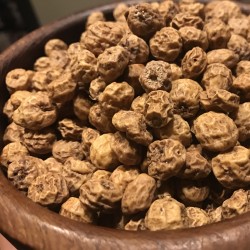
Earth Almond Seeds (Cyperus...
Price
€2.50
(SKU: PS 6)
Seeds Gallery EU,
5/
5
<div class="rte">
<h2><strong>EARTH ALMOND Seeds chufa sedge, nut grass (Cyperus esculentus)</strong></h2>
<h2><span style="color: #ff0000;" class=""><strong>Price for Package of 5 Tubers - seeds.</strong></span></h2>
<p><strong>Our chufa seeds are all natural untreated and Non-GMO.</strong></p>
<p>Chufa are great for Turkey, Deer, and other wildlife. Plant 50 lbs. - per acre</p>
<p>Chufas are a bunch of grass with a peanut like an underground nut - used for food plots of deer, turkey, hogs, and wild hogs. This legume is very similar to peanuts, if you have ever seen hogs rooting peanuts, they go after chufa the same way. Plant in spring through summer. Wildlife digs up the chufas once they mature.</p>
<p>Chufas are a perennial sedge that is one of the most popular foods for wild turkeys. Chufa plants have underground tubers, which are part of the plant that turkeys eat. One chufas tuber will produce a plant that can grow to 15-75 tubers when mature. Turkeys find the tubers by scratching them from just under the surface of the ground. The tubers are high in protein and fat, which makes them especially nutritious for wild turkeys. Chufa can also make an excellent food source for other wildlife including deer and ducks.</p>
<p>Chufa plants grow well in the southern half of the US from Northern California across to Southern Iowa and even Southern Pennsylvania. Chufa plants grow in a variety of soil, but perform best on well-drained, sandy, or loamy soils. Clay soils can support chufa. When growing in clay soils, lightly turn the soil in the fall to expose the tubers. This practice can be done periodically to extend the food supply into winter and early spring. Simply plow several strips twice a month until the entire field has been plowed. Generally, chufa will grow anywhere that corn can be successfully grown.<br>Sowing & cultivation<br>Indoor pre-culture (seedling stage): MarchApril<br>Sowing time outdoors: May<br>Sowing depth: 1 – 3 cm<br>Best germination temperature : 15 °C<br>Germination time in days: 14 – 21<br>Planting distance: 30 x 30 Pcs.<br>Main harvest: October November December<br><br>Tubers are planted outdoors in mid-May (let them soak for several hours in water before planting). <br><br>They may also prefer pot culture since they need plenty of heat to wake up from hibernation! <br><br>The tubers allegedly tolerate frost down to -15 °C. <br>Normally though, they are overwintered indoors.</p>
</div>
PS 6

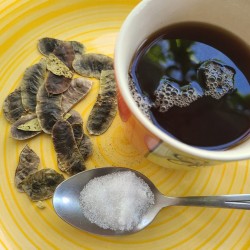
Sickle senna seeds (Cassia...
Price
€2.55
(SKU: MHS 91)
Seeds Gallery EU,
5/
5
<h2><strong>Sickle senna seeds (Cassia tora)</strong></h2>
<h2><span style="color: #ff0000;" class=""><strong>Price for package 20 seeds.</strong></span></h2>
Senna tora (originally described by Linnaeus as Cassia tora) is a plant species in the family Fabaceae and the subfamily Caesalpinioideae. Its name is derived from its Sinhala name tora (තෝර). It grows wild in most of the tropics and is considered a weed in many places. Its native range is in Central America. Its most common English name is sickle senna[2] or sickle wild sensitive-plant.[3] Other common names include sickle pod, tora, coffee pod, tovara, chakvad, thakara in Malayalam, and foetid cassia. It is often confused with Chinese senna or sicklepod, Senna obtusifolia.<br /><br />Senna tora is an herbaceous annual foetid herb. The plant can grow 30–90 centimeters (12–35 in) tall and consists of alternative pinnate leaves with leaflets mostly with three opposite pairs that are obovate in shape with a rounded tip. The leaves grow up to 3–4.5 centimeters long. The stems have distinct smelling foliage when young. The flowers occur in pairs in axils of leaves with five petals and pale yellow in color. The stamens are of unequal length. The pods are somewhat flattened or four-angled, 10–15 cm long, and sickle-shaped, hence the common name sicklepod. There are 30–50 seeds within a pod.<br /><br />
<h3><strong>Growing conditions</strong></h3>
Senna tora is found in many parts of the world. It grows abundantly in parts of Afghanistan, India, Nigeria, China, Pakistan, Myanmar, Nepal and Bhutan. It is also grown and cultivated areas in the Himalayas at an elevation of 1400 meters in Nepal. It is distributed throughout India, Sri Lanka, West China, and the tropics, particularly in forest and tribal areas.<br /><br />Senna tora is considered an annual weed, is very stress-tolerant, and is easily grown. In India, it occurs as a wasteland rainy season weed and its usual flowering time is after the monsoon rains, during the period of October to February. Senna tora grows in dry soil from sea level up to 1800 meters. The seed can remain viable for up to twenty years. Up to 1000 plants can emerge per square meter following rain. Once the seed has matured, it is gathered and dried in the sun. In South Asia, it usually dies off in the dry season of July–October.<br /><br />
<h2><strong>Uses</strong></h2>
Senna tora has many uses. The whole plant and roots, leaves, and seeds have been widely used in traditional Indian and South Asian medicine. The plant and seeds are edible. Young leaves can be cooked as a vegetable while the roasted seeds are used as a substitute coffee. In Sri Lanka, the flowers are added to food. It is used as a natural pesticide in organic farms, and as a powder commonly used in the pet food industry. It is mixed with guar gum for use in mining and other industrial applications. The seeds and leaves are used to treat skin disease and its seeds can be utilized as a laxative. Senna tora is made into tea. In the Republic of Korea, it is believed to rejuvenate human vision. This tea has been referred to as "coffee-tea", because of its taste and its coffee aroma. Since Senna tora has an external germicide and antiparasitic character, it has been used for treating skin diseases such as leprosy, ringworm, itching, and psoriasis and also for snakebites. Other medicinal provisions from plant parts include balm for arthritis using the leaves. Senna tora is one of the recognized plants that contain the organic compound anthraquinone and is used in Chinese and Ayurvedic medicine. This herb is used in Ayurveda for the treatment of swellings.<br /><br />
<h3><strong>Sowing the seeds </strong></h3>
Soak the seeds for 2–3 hours in warm water before sowing it from early spring to early summer in a warm greenhouse or pot in your own home. The seed usually germinates in 1–12 weeks at 23°C.
<script src="//cdn.public.n1ed.com/G3OMDFLT/widgets.js"></script>
MHS 91 (20 S)


Variety from Slovenia
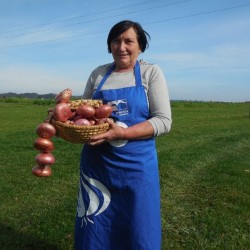
Red Onion seeds Ptujski Luk
Price
€2.05
(SKU: MHS 157 (50 S))
Seeds Gallery EU,
5/
5
<h2 class=""><strong>Red Onion seeds Ptujski Luk</strong></h2>
<h2><span style="color: #ff0000;"><strong>Price for a Package of 50 seeds.</strong></span></h2>
<strong>THE KING OF ONIONS and a European specialty!</strong><br />Ptujski onion is manually grown, picked, and braided in wreaths just as it has been for the past 200 years. Its flavor, pungency, and quality make it one of the best onion varieties. The traditional methods of cultivation used as well as its origin have earned Ptujski onion the Protected Geographical Indication mark, and a place not only on the list of protected Slovenian agricultural products but also of European specialties.<br /><br /><strong>Flavour, origin, tradition</strong><br />Both the gravelly ground and the climate, with its perfect combination of sun and rain, give special pungency to this onion variety. Ptujski lük is perfect for cooking and disintegrates quickly. It also stores well – typically, in a dark and cool place until the spring.<br /><br />
<h3><strong>How do you recognize Ptujski onion?</strong></h3>
Its flat, heart shape<br />The reddish-brown to the bright red coloring of its scale leaves<br />Its white flesh, with a purple-reddish tinge and pronounced purple edge<br />Its moderately pungent taste<br />Its strong ‘oniony’ smell
MHS 157 (50 S)

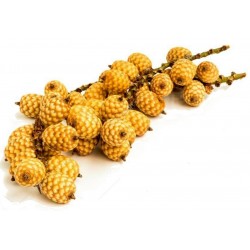
Rattan Seeds (Calamus manan)
Price
€4.50
(SKU: PS 11)
Seeds Gallery EU,
5/
5
<h2><span style="font-size: 14pt;" data-mce-style="font-size: 14pt;" class="n1ed--selected"><strong>Rattan Seeds (Calamus manan)</strong></span></h2><h2><span style="color: #fb0101; font-size: 14pt;" data-mce-style="color: #fb0101; font-size: 14pt;"><strong>Price for Package of 3 seeds.</strong></span></h2><p><span>Calamus manan is a robust, single stemmed, high-climbing, dioecious rattan. Plants produce a strong durable cane up to 8 cm in diameter, with internodes to 40 cm in length, and with stems eventually reaching to over 100 m. Growth rates of over 7 m a year have been inferred from observation of plants in Sabah (Dransfield and Tan, pers. obs. 1989), but more usually 1-3 m or more a year. Leaves cirrate to 8 m long including the cirrus to 3 m long. Petiole short, leaflets irregular in juvenile leaves and regular in mature leaves, to 45 on each side of rachis, lanceolate. Inflorescences massive, the male much more finely branched than the female, 70 cm long. Ripe fruit rounded to ovoid, to 2.8 cm long by 2.0 cm wide and covered with 15 vertical rows of yellowish scales with blackish-brown margins. Seed ovoid, to 1.8 cm by 1.2 cm, with finely pitted surface.</span></p><p><span>Solitary massive high climbing rattan, reaching eventually lengths of over 100 m. Stem without sheaths to 8 cm in diameter, sometimes quite slender (2.5 cm) at the very base, with sheaths to 11 cm in diameter; internodes to 40 cm long. Sheaths dull grey green densely armed with black laminate hairy edged triangular spines arranged in lateral groups or scattered, the largest to J cm long by 1 cm wide at the base, and with numerous much smaller spines to 5 mm long between; spines horizontal or slightly reflexed; thin white wax abundant between spines. Knee conspicuous armed as leaf sheath. Ocrea ill-defined. Leaf cirrate very massive to 8 m long including the cirrus to 3 m long; petiole short, to 12 cm long by 5 cm wide in mature plants, much longer in juveniles armed densely as is the rachis with short triangular spines both on the upper surface and beneath, with scattered grey in dumentum between. Leaflets irregular in juvenile leaves, regular in mature leaves, limply pendulous and versatile, to 45 on each side, pale grey-green, the largest to 60 cm long by 6 cm wide bristly near the tips. Inflorescences massive, the male much more finely branched than the female, to 2.5 m long with up to 9 partial inflorescences on each side to 70 cm long; all bracts rather densely armed with triangular spines to 3 mm high and red-brown in dumentum. Rachillae to 15 cm long. Ripe fruit rounded to ovoid, to 2.8 cm long by 2.0 cm wide shortly beaked, and covered in 15 vertical rows of yellowish scales with blackish brown margins. Seed ovoid, to 1.8 cm long by 1.2 cm wide, with finely pitted surface; endosperm densely and deeply ruminate. Seedling leaf with 2 divergent leaflets cucullate with a waxy blue-grey bloom on a pale dull green surface. (J. Dransfield, A Manual of the rattans of the Malay Peninsula. Malayan Forest Records 29.. 1979)/Palmweb. Editing by edric.</span></p><p><span>"Rotan manau" is widespread, but usually confined to steep slopes in hill Dipterocarp forest. It is rather rarely found in lowland Dipterocarp forest, and there, nearly always on steep slopes. It has an altitudinal range of about 50-1000 m and is at present most abundant between 600 and 1000 m altitude. It is likely however that it was formerly much more widespread, with its range being limited now by over exploitation. Seedlings are very characteristic and often abundant in hill forest. Calamus manan is variable in size and coloration. Beccari originally separated Malayan material as a separate species (C. giganteus) but I consider this to be conspecific with C. manan. Novices sometimes confuse "rotan manau" with "rotan dok" which is also very large and often grows with it. However, "rotan dok" is immediately distinguished because it has a flagellum and no cirrus whereas "rotan manau" has a cirrus but no flagellum. Calamus tumidus is very close to C. manan but can be separated on its smaller size, different leaf sheath armature and the very large bulbous, swollen knee. (J. Dransfield, A Manual of the rattans of the Malay Peninsula. </span>Malayan Forest Records 29.. 1979)/Palmweb.</p>
PS 11 (3 S)

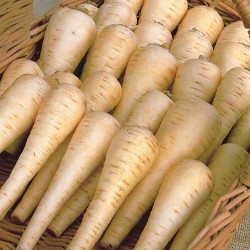
Pannonian smooth parsnip seeds
Price
€1.55
(SKU: VE 30 P (1g))
Seeds Gallery EU,
5/
5
<h2><strong>Pannonian smooth parsnip seeds</strong></h2>
<h2><span style="color: #fd0000;"><strong>Price for Package of 150 (1g) seeds.</strong></span></h2>
<div class="">Pannonian smooth parsnip is a slightly aromatic spice plant in which only the root is used. Spindle root has a specific aroma that is used in cooking. Plant: medium lush, erect rosettes, height 40 - 50 cm<br><br>Root: slightly conical, 18 - 25 cm long, whitebark, light yellow marrow, juicy and aromatic, head diameter 6 - 8 cm, and body about 5 cm, weight 350 - 500 g, contains 16 - 17% dry matter<br><br>Maturation: medium-aged variety<br><br>Note: it is intended for industrial processing and household use, yields range from 30 - 50 t / ha<br>It is sown in early spring in loose soil 40-50 cm x 7-10 cm, depth 2-3 cm. <br>It germinates already at 0 ◦C. </div>
<p> </p>
<p> </p>
<script src="//cdn.public.n1ed.com/G3OMDFLT/widgets.js"></script>
VE 30 P (1g)


Ayurveda Plant

Medicinal or spice plant
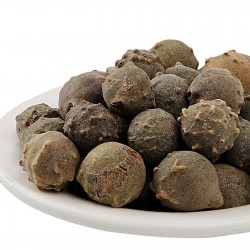
Aleppo Oak seeds (Quercus...
Price
€9.95
(SKU: T 90)
Seeds Gallery EU,
5/
5
<h2><strong>Aleppo Oak seeds (Quercus infectoria)</strong></h2>
<h2><span style="color: #ff0000;"><strong>Price for Package of 5 seeds.</strong></span></h2>
Quercus infectoria, the Aleppo oak, is a species of oak, bearing galls that have been traditionally used for centuries in Asia medicinally. Manjakani is the name used in Malaysia for the galls; these have been used for centuries in softening leather and in making black dye and ink. In India, the galls are called majuphal among many other names.<br><br>Quercus infectoria is a small tree native of Greece and Asia Minor, with one to two meters (four to six feet) in height. The stems are crooked, shrubby looking with smooth and bright-green leaves borne on short petioles of 3 to 4 cm (1 to 1.5 inches) long. The leaves are bluntly mucronate, rounded, smooth, unequal at the base, and shiny on the upper side.<br><br>The galls arise on young branches of the Quercus infectoria tree when gall wasps sting the oak tree and deposit their larvae the chemical reaction causes an abnormality in the oak tree causing hard balls to be formed. They are corrugated in appearance.<br><br>Quercus infectoria can be used as a thickener in stews or mixed with cereals for making bread.<br><br>Also known as Majuphal in Indian traditional medicine, manjakani has been used as dental powder and in the treatment of toothache and gingivitis.<br><br>The so-called "Aleppo tannin" is Tannic acid gained from Aleppo oak galls, which displays unique chemical properties essential in the preparation of gold sols (colloids) used as markers in Immunocytochemistry.<br><br>Nowadays, gallnut extracts are also widely used in pharmaceuticals, food and feed additives, dyes, inks, and metallurgy.<br><br>Majuphal Manjakani is one of the strongest natural herbs in Ayurveda and It is popular for its tissue tightening benefits in women and it used as a protective herb for infants soon after birth. Majuphal Manjakani is considered to be the best remedy for vaginal or uterine prolapse, abnormal uterine bleeding, abnormal vaginal discharge, and leucorrhea.<br><br>Majuphal Manjakani for Urinary Infection, Majuphal Manjakani helps relieve urinary tract infections. Its astringent property helps overcome infection in urinary tracts, besides healing the damages in tissues and rejuvenating skin and tissue health in the vagina. Its consumption internally is recommended along with other herbs to be effective, but its astringent property makes it the best solution for external cleaning to get rid of ulcers and tissue damages in the vagina.<br><br>Majuphal Manjakani Use for Vagina tightening, Majuphal Manjakani has a lot of uses and health benefits for Women. It has a skin and tissue tightening property. Majuphal Manjakani is considered to be the best remedy for vaginal or uterine prolapse, abnormal uterine bleeding, abnormal vaginal discharge, leucorrhea. Its use as a topical applicant in the form of a paste or its powdered solution used in wash care routine helps heal tissues and overcome prolapse conditions quickly. It is used with other herbs and given to women after childbirth to restore the elasticity of the uterine wall. Its natural astringent property restores health, tone, and vigor to the vagina which will result in better and more enjoyable sex as well as an increase in sexual sensations and pleasure for both the woman and her partner.<br><br>Majuphal Manjakani is known as “herbal magic” contains rich in tannins to tighten vaginal muscles, vitamins A and C, calcium, protein, and contain an astringent element to eliminate the bacteria that causes vaginal discharge, and increase density and it help to prevent further vaginal aging which results from childbearing, your age, your sexual partners over the years, and overall health.<script src="//cdn.public.n1ed.com/G3OMDFLT/widgets.js"></script>
T 90


Ayurveda Plant

Medicinal or spice plant

Variety from India
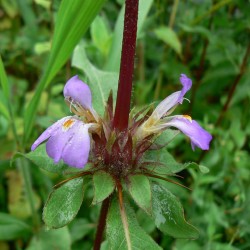
Kulikhara, Kokilaksah Seeds...
Price
€3.95
(SKU: VE 207 (1g))
Seeds Gallery EU,
5/
5
<h2><strong>Kulikhara, Kokilaksah Seeds (Asteracantha longifolia)</strong></h2>
<h2><span style="color: #f80000;"><strong>Price for Package of 450 (1g) Seeds.</strong></span></h2>
Asteracantha longifolia is a herbaceous, medicinal plant in the acanthus family that grows in marshy places and is native to tropical Asia and Africa. In India, it is commonly known as kokilaksha or gokulakanta, in Sri Lanka as neeramulli. In Kerala it is called vayalchulli (വയൽച്ചുളളി). In Tamil, it is called Neermulli (நீர்முள்ளி).<br><br>Kulikhara, Kokilaksah, Long Leaves Barleria (Asteracantha longifolia) Nees, Acanthaceae, is a source of the ayurvedic drug, 'Kokilaaksha' and the Unani drug, Talimakhana. The seeds are acrid, bitter, aphrodisiac, tonic, sedative, used for diseases of the blood. The plant is known to possess antitumor, hypoglycemic, aphrodisiac, antibacterial, free radical scavenging and lipid peroxidation, hepatoprotective and hematopoietic activity. It contains lupeol, stigmasterol, bulletin, fatty acids, and alkaloids. The present review article is focused on phytochemical, pharmacological, and other important aspects of Talimakhana<br><br>Uses: Roots are sweet, sour, bitter, refrigerant, diuretic, anti-inflammatory, analgesic, hemopoietic, hepatoprotective, and tonic. It is useful in inflammations, hyperdipsia, strangury, jaundice, and vesical calculi. It is also used in flatulence and dysentery. Leaves are hemopoietic, hepatoprotective, anti-inflammatory, antioxidant, analgesic, antidiabetic, stomachic, ophthalmic, diuretic, and liver tonic. It is used in hepatic obstruction, jaundice, arthritis, rheumatism, and diseases of the urinogenital tract. It is useful in flatulence and other stomach-related diseases. It is useful in anemia and for treating blood diseases. It is used to lower the blood sugar level. Seeds are gelatinous, febrifuge, rejuvenating and nervine tonic. It is used in burning sensations, fever, and headaches. It is also used in diarrhea and dysentery. A paste of the seeds mixed with buttermilk or whey is given for diarrhea. A decoction of the roots is used as a diuretic and to treat rheumatism, gonorrhea, and other diseases of the genito-urinary tract, jaundice, and anasarca.<script src="//cdn.public.n1ed.com/G3OMDFLT/widgets.js"></script>
VE 207 (1g)


Ayurveda Plant

Medicinal or spice plant
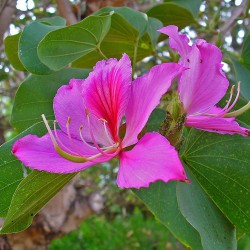
Orchid tree - mountain...
Price
€1.25
(SKU: T 91)
Seeds Gallery EU,
5/
5
<h2 class=""><strong>Orchid tree - mountain ebony seeds (Bauhinia variegata)</strong></h2>
<h2 style="color: #232323; font-size: 2rem;"><span style="color: #ff0000;"><strong>Price for Package of 5 seeds.</strong></span></h2>
<p style="color: #202122; font-size: 14px;"><i><b>Bauhinia variegata</b></i><span> </span>is a species of<span> </span>flowering plant<span> </span>in the legume family,<span> </span>Fabaceae. It is native to an area from China through<span> </span>Southeast Asia<span> </span>to the<span> </span>Indian subcontinent.<sup id="cite_ref-GRIN_2-0" class="reference" style="font-size: 11.2px;"></sup><span> </span>Common names include<span> </span><b>orchid tree</b><span> </span>(though not belonging to the family<span> </span>Orchidaceae) and<span> </span><b>mountain ebony</b>.</p>
<p>It is a small to medium-sized tree growing to 10–12 metres (33–39 ft) tall,<span> </span>deciduous<span> </span>in the<span> </span>dry season. The<span> </span>leaves<span> </span>are 10–20 centimetres (3.9–7.9 in) obcordate shaped, long and broad, rounded, and bilobed at the base and apex. The<span> </span>flowers<span> </span>are conspicuous, bright pink or white, 8–12 centimetres (3.1–4.7 in) diameter, with five petals. Pollens are elongated, approximately 75 microns in length.</p>
<p>The<span> </span>fruit<span> </span>is a<span> </span>seedpod<span> </span>15–30 centimetres (5.9–11.8 in) long, containing several<span> </span>seeds. The seedpod dries completely on the tree, and when mature begins to twist into a helix or corkscrew shape, (see<span> </span>below), ultimately exploding open—with a very audible "clack"—to deliver its seeds into the environs.</p>
<p>The anatomy of the stem was studied by taking transverse section. Periderm and cortex were seen distinctly. Secondary phloem was wide and continuous cylindrical, it consisted of thin and narrow straight rays, three or four cylinders of discontinuous masses of fibres and randomly distributed sieve elements. Secondary xylem was diffuse porous and it included vessels, fibres, xylem rays and xylem parenchyma. Xylem fibres had thick lignified walls or some had gelatinous walls. Xylem parenchyma cells were abundant in the xylem. Xylem rays were one cell wide; they were straight and consisted of radially elongated thick walled lignified walls. Calcium-oxalate crystals are predominantly prismatic crystals and druses type. Powder microscopical examination showed presence of fibres, parenchymatous cells, periderm and vessel elements. Histochemical analysis of stem showed presence of protein, tannin, lignin and cellulose.<sup id="cite_ref-3" class="reference" style="font-size: 11.2px;">[3]</sup></p>
<p>The anatomy of the root was studied by taking transverse section. Secondary phloem and secondary xylem were seen distinctly. Secondary phloem had fairly wide rays, dense masses of phloem fibers and radial rows of phloem elements. Secondary xylem had much wider, thin-walled vessels which were either solitary or in radial multiples. The xylem fibers constituted gelatinous type and normal type. Calcium oxalate crystals were predominantly prismatic type. Powder microscopical examination showed presence of xylem parenchyma cells, xylem fibers and vessel elements.<sup id="cite_ref-4" class="reference" style="font-size: 11.2px;"></sup></p>
<h2 style="color: #000000; font-size: 1.5em;"><span class="mw-headline" id="In_cultivation">In cultivation</span></h2>
<p>This is a very popular<span> </span>ornamental tree<span> </span>in subtropical and tropical climates, grown for its scented flowers and also used as a food item in<span> </span>Indian cuisine. In the<span> </span>Neotropics, it can be used to attract<span> </span>hummingbirds—such as<span> </span>sapphire-spangled emerald<span> </span>(<i>Amazilia lactea</i>),<span> </span>glittering-bellied emerald<span> </span>(<i>Chlorostilbon lucidus</i>), or<span> </span>white-throated hummingbird<span> </span>(<i>Leucochloris albicollis</i>)—into gardens and parks.<sup id="cite_ref-5" class="reference" style="font-size: 11.2px;"></sup><span> </span>On the other hand, in some areas it has become<span> </span>naturalised<span> </span>and<span> </span>invasive.</p>
<h2 style="color: #000000; font-size: 1.5em;"><span class="mw-headline" id="Uses">Uses</span></h2>
<p>Kachnar is a local name in the Indian subcontinent for the edible buds collected from the tree; it is widely used as an ingredient in many subcontinent recipes. Traditional kachnar curry is prepared using kachnar buds, yogurt, onions and native spices. Kachnar buds are also eaten as a stir-fried vegetable and used to make<span> </span>achaar, a pickle in many parts of the Indian sub-continent.<sup id="cite_ref-6" class="reference" style="font-size: 11.2px;"></sup><span> </span>It shows a good antioxidant and anticancer activity.</p>
<p style="color: #202122; font-size: 14px;"><br><sup id="cite_ref-GRIN_2-1" class="reference" style="font-size: 11.2px;"></sup></p>
<br><br>
<script src="//cdn.public.n1ed.com/G3OMDFLT/widgets.js"></script>
T 91 (5 S)


Medicinal or spice plant

Variety from Serbia
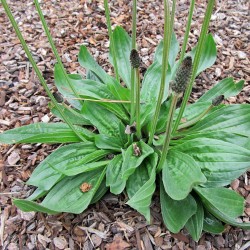
Ribwort plantain, English...
Price
€1.25
(SKU: VE 216)
Seeds Gallery EU,
5/
5
<h2><strong>Ribwort plantain, English plantain Seeds (Plantago lanceolata)</strong></h2>
<h2><span style="color: #f80000;" class=""><strong>Price for Package of 560 (1g) seeds.</strong></span></h2>
<p style="color: #202122; font-size: 14px;" class=""><i><b>Plantago lanceolata</b></i><span> </span>is a species of<span> </span>flowering plant<span> </span>in the plantain family<span> </span>Plantaginaceae. It is known by the common names<span> </span><b>ribwort plantain</b>,<sup id="cite_ref-BSBI07_1-0" class="reference" style="font-size: 11.2px;"></sup><span> </span><b>narrowleaf plantain</b>,<sup id="cite_ref-2" class="reference" style="font-size: 11.2px;"></sup><span> </span><b>English plantain</b>,<sup id="cite_ref-3" class="reference" style="font-size: 11.2px;"></sup><span> </span><b>ribleaf</b>,<span> </span><b>lamb's tongue</b>, and<span> </span><b>buckhorn</b>.<sup id="cite_ref-4" class="reference" style="font-size: 11.2px;"></sup><span> </span>It is a common<span> </span>weed<span> </span>on cultivated or disturbed land.<br><br><span>The plant is a </span>rosette<span>-forming </span>perennial<span> </span>herb<span>, with leafless, silky, hairy </span>flower<span> stems (10–40 cm or 3.9–15.7 in). The basal leaves are </span>lanceolate<span> spreading or erect, scarcely toothed with 3-5 strong parallel veins narrowed to a short </span>petiole<span>. The flower stalk is deeply furrowed, ending in an ovoid inflorescence of many small flowers each with a pointed bract. </span><sup id="cite_ref-Blamey_5-0" class="reference" style="font-size: 11.2px;">[5]</sup><sup class="reference" style="font-size: 11.2px;">:<span>248</span></sup><span> Each inflorescence can produce up to two hundred seeds. Flowers are 4 millimetres (0.16 in) (</span>calyx<span> green, </span>corolla<span> brownish), 4 bent back lobes with brown midribs and long white stamens. It is native to temperate Eurasia, widespread throughout the </span>British Isles<span>, but scarce on the most acidic soils (</span>pH<span> < 4.5). It is present and widespread in the Americas and Australia as an </span>introduced species<span>.</span></p>
<i style="color: #202122; font-size: 14px;">Plantago lanceolata</i><span style="color: #202122; font-size: 14px;"><span> </span>is native to Eurasia, but has been introduced to North America and many other parts of the world with suitable habitats.</span><br><br><span style="color: #202122; font-size: 14px;">Considered to be an indicator of agriculture in<span> </span></span>pollen<span style="color: #202122; font-size: 14px;"><span> </span>diagrams,<span> </span></span><i style="color: #202122; font-size: 14px;">P. lanceolata</i><span style="color: #202122; font-size: 14px;"><span> </span>has been found in western<span> </span></span>Norway<span style="color: #202122; font-size: 14px;"><span> </span>from the Early<span> </span></span>Neolithic<span style="color: #202122; font-size: 14px;"><span> </span>onwards, which is considered an indicator of grazing in that area at the time.</span><sup id="cite_ref-7" class="reference" style="color: #202122; font-size: 11.2px;">[7]</sup><span style="color: #202122; font-size: 14px;"><span> </span>This would make sense, as<span> </span></span><i style="color: #202122; font-size: 14px;">P. lanceolata</i><span style="color: #202122; font-size: 14px;"><span> </span>thrives in open fields where livestock are frequently disturbing the ground.</span><br><br>
<h2 style="color: #000000; font-size: 1.5em;"><span class="mw-headline" id="Uses">Uses</span></h2>
<p style="color: #202122; font-size: 14px;"><i>Plantago lanceolata</i><span> </span>is used frequently in<span> </span>herbal teas<span> </span>and other<span> </span>herbal remedies.<sup id="cite_ref-8" class="reference" style="font-size: 11.2px;">[8]</sup><span> </span>A tea from the leaves is used as a cough medicine. In the traditional Austrian medicine<span> </span><i>Plantago lanceolata</i><span> </span>leaves have been used internally (as syrup or tea) or externally (fresh leaves) for treatment of disorders of the respiratory tract, skin, insect bites, and infections.<sup id="cite_ref-9" class="reference" style="font-size: 11.2px;">[9]</sup><span> </span>The leaves can be eaten when very young.<sup id="cite_ref-10" class="reference" style="font-size: 11.2px;"></sup></p>
<p style="color: #202122; font-size: 14px;">Songbirds eat the seeds, and the leaves are eaten by rabbits.<sup id="cite_ref-11" class="reference" style="font-size: 11.2px;"></sup></p>
<h2 style="color: #000000; font-size: 1.5em;"><span class="mw-headline" id="Chemistry">Chemistry</span></h2>
<p style="color: #202122; font-size: 14px;"><i>Plantago lanceolata</i><span> </span>contains<span> </span>phenylethanoids<span> </span>such as<span> </span>acteoside<span> </span>(verbascoside), cistanoside F, lavandulifolioside, plantamajoside and isoacteoside.<sup id="cite_ref-12" class="reference" style="font-size: 11.2px;">[12]</sup><span> </span>It also contains the iridoid glycosides<span> </span>aucubin<span> </span>and<span> </span>catalpol.<sup id="cite_ref-13" class="reference" style="font-size: 11.2px;">[13]</sup><span> </span>These iridoid glycosides make the plant inedible to some herbivores, but others are unperturbed by them--for example, the buckeye butterfly<span> </span><i>Junonia coenia</i>, whose larvae eat the leaves of<span> </span><i>P. lanceolata</i><span> </span>and ingest the iridoid glycosides to make themselves unpalatable to predators.</p>
<h2 style="color: #000000; font-size: 1.5em;"><span class="mw-headline" id="Habitat">Habitat</span></h2>
<p style="color: #202122; font-size: 14px;"><i>Plantago lanceolata</i><span> </span>can live anywhere from very dry meadows to places similar to a rain forest,<sup id="cite_ref-:0_14-0" class="reference" style="font-size: 11.2px;">[14]</sup><span> </span>but it does best in open, disturbed areas. It is therefore common near roadsides where other plants cannot flourish; it grows tall if it can do so, but in frequently-mowed areas it adopts a flat growth habit instead. Historically, the plant has thrived in areas where ungulates graze and turn up the earth with their hooves.</p>
<h2 style="color: #000000; font-size: 1.5em;"><span class="mw-headline" id="Reproduction">Reproduction</span></h2>
<p style="color: #202122; font-size: 14px;">The mode of reproduction can vary among populations of<span> </span><i>P. lanceolata</i>.<sup id="cite_ref-Jousimo,_Jussi_2014_15-0" class="reference" style="font-size: 11.2px;">[15]</sup><span> </span>Reproduction occurs sexually, with the pollen being wind dispersed for the most part, though the plant is occasionally pollinated by bees.<sup id="cite_ref-Jousimo,_Jussi_2014_15-1" class="reference" style="font-size: 11.2px;">[15]</sup><span> </span><i>P. lanceolata</i><span> </span>cannot<span> </span>reproduce asexually<span> </span>in the way that many other species of<span> </span><i>Plantago</i><span> </span>can; instead, it is an obligate<span> </span>outcrosser.</p>
<h2 style="color: #000000; font-size: 1.5em;"><span class="mw-headline" id="Enemies">Enemies</span></h2>
<h3 style="color: #000000; font-size: 1.2em;"><span class="mw-headline" id="Insect_predation">Insect predation</span></h3>
<p style="color: #202122; font-size: 14px;"><i>Plantago lanceolata</i><span> </span>is host to many different species of the order<span> </span>Lepidoptera. Species such as<span> </span><i>Junonia coenia,<span> </span>Spilosoma congrua,</i><span> </span>and<span> </span><i>Melitaea cinxia</i><span> </span>lay their eggs on<span> </span><i>P. lanceolata</i><span> </span>plants so they can serve as a food source for the larvae when they hatch.<sup id="cite_ref-16" class="reference" style="font-size: 11.2px;">[16]</sup><sup id="cite_ref-17" class="reference" style="font-size: 11.2px;">[17]</sup><span> </span>The iridoid glycosides in the plant leaves accumulate in the caterpillars and make them unpalatable to predators.</p>
<h3 style="color: #000000; font-size: 1.2em;"><span class="mw-headline" id="Infection_by_powdery_mildew">Infection by powdery mildew</span></h3>
<p style="color: #202122; font-size: 14px;"><i>Podosphaera plantaginis</i><span> </span>is a powdery mildew fungus that infects<span> </span><i>P. lanceolata</i>. All of the<span> </span><i>P. lanceolata</i><span> </span>populations are infected by several strains of this powdery mildew fungus.<sup id="cite_ref-18" class="reference" style="font-size: 11.2px;">[18]</sup><span> </span>Once the populations are infected, the symptoms are minimal at first. Then, after a few weeks or months lesions start to appear covering the entire surface of the leaves and the stem, making it very noticeable.<sup id="cite_ref-:0_14-1" class="reference" style="font-size: 11.2px;">[14]</sup><span> </span>Another species that infects<span> </span><i>P. lanceolata</i><span> </span>is<span> </span><i>Golovinomyces sordidus</i>. Both of these mildews are obligate<span> </span>biotrophs, meaning that they can only infect living tissue. They cover the surface of the leaves and extend<span> </span>hyphae<span> </span>into the cell matrix in order to extract nutrients.</p>
<h4 style="color: #000000; font-size: 14px;"><span class="mw-headline" id="Resistance_to_powdery_mildew">Resistance to powdery mildew</span></h4>
<p style="color: #202122; font-size: 14px;">After the populations are infected, they react in different ways. Some populations of<span> </span><i>P. lanceolata</i><span> </span>are more susceptible to different strains of powdery mildew. Also, some populations have multiple resistance phenotypes where on the other hand, others may only have one resistance phenotype.<sup id="cite_ref-:0_14-2" class="reference" style="font-size: 11.2px;">[14]</sup><span> </span>Overall, the populations that have the highest variety of resistance phenotypes will have the highest survival rates particularly when rates of infection are high.<sup id="cite_ref-:0_14-3" class="reference" style="font-size: 11.2px;"></sup></p>
<h2 style="color: #000000; font-size: 1.5em;"><span class="mw-headline" id="In_popular_culture">In popular culture</span></h2>
<p style="color: #202122; font-size: 14px;">In the UK and Ireland the plant is used by children to play various simple games. In Edinburgh, Scotland this game is called ‘The 1 o’clock gun’ after the gun that fires everyday from Edinburgh Castle. Writer Sean Michael Wilson notes that: "When I was a kid in Edinburgh we used it for a cute wee game called ‘The 1 o’clock gun’ - we twisted the stalk around into a kind of noose, quickly pulled it (with the left hand pulling back sharply and the right hand moving forward) and then the head of the stalk would go shooting off. Piitttt!! We used to see how far we could get it to go - great fun." In the West Country of England the same game is called 'cannonballs'. Another game played with the plant in Scotland and Ireland and possibly also in England is called 'Bishops'. This game is a bit like<span> </span>conkers; a child tries to knock off the head of their friend's stalk using their own stalk, via a fast downward thrust.</p>
<br>
<script src="//cdn.public.n1ed.com/G3OMDFLT/widgets.js"></script>
VE 216 (1g)


Medicinal or spice plant
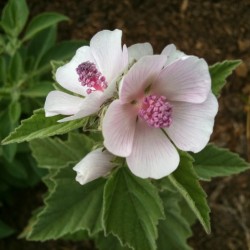
Marsh-mallow Seeds (Althaea...
Price
€1.85
(SKU: VE 219)
Seeds Gallery EU,
5/
5
<h2 class=""><strong>Marsh-mallow Seeds (Althaea officinalis)</strong></h2>
<h2><span style="color: #f80000;" class=""><strong>Price for Package of 350 (1g) seeds.</strong></span></h2>
<p style="color: #202122; font-size: 14px;"><i><b>Althaea officinalis</b></i>, or<span> </span><b>marsh-mallow</b>,<sup id="cite_ref-BSBI07_2-0" class="reference" style="font-size: 11.2px;"></sup><span> </span>is a<span> </span>perennial<span> </span>species indigenous to<span> </span>Europe,<span> </span>Western Asia, and<span> </span>North Africa, which is used in<span> </span>herbalism<span> </span>and as an<span> </span>ornamental plant. A confection made from the root since<span> </span>ancient Egyptian<span> </span>times evolved into today's<span> </span>marshmallow<span> </span>treat, <sup id="cite_ref-S&S_3-0" class="reference" style="font-size: 11.2px;"></sup>but most modern marshmallow treats no longer contain any marsh-mallow root.<sup id="cite_ref-4" class="reference" style="font-size: 11.2px;"></sup></p>
<p>The stems, which die down in the autumn, typically grow 90 to 120 cm (3 to 4 ft), but can reach<span> </span>2.0 m (<span class="frac" role="math">6<span class="sr-only">+</span><span class="num" style="font-size: 11.2px;">1</span>⁄<span class="den" style="font-size: 11.2px;">2</span></span> ft) and put out only a few lateral branches.<sup id="cite_ref-5" class="reference" style="font-size: 11.2px;">[5]</sup><span> </span>The leaves are shortly<span> </span>petioled, roundish, ovate-cordate, 50 to 75 mm (2 to 3 in) long, and about<span> </span>30 mm (<span class="frac" role="math">1<span class="sr-only">+</span><span class="num" style="font-size: 11.2px;">1</span>⁄<span class="den" style="font-size: 11.2px;">4</span></span> in) broad, entire or three to five lobed, irregularly toothed at the margin, and thick. They are soft and velvety on both sides, due to a dense covering of stellate hairs. The flowers are shaped like those of the<span> </span>common mallow, but are smaller and of a pale colour, and are either<span> </span>axillary, or in<span> </span>panicles, more often the latter.</p>
<p>The<span> </span>stamens<span> </span>are united into a tube, the anthers, kidney-shaped and one-celled. The flowers are in bloom during August and September, and are followed, as in other species of this order, by the flat, round fruit which are popularly called "cheeses".</p>
<p>The<span> </span>common mallow<span> </span>is frequently called "marsh mallow" in colloquial terms, but the true marsh mallow is distinguished from all the other mallows growing in<span> </span>Great Britain<span> </span>by the numerous divisions of the outer<span> </span>calyx<span> </span>(six to nine cleft), by the hoary down which thickly clothes the stems and foliage, and by the numerous panicles of blush-coloured flowers, paler than the common mallow. The roots are perennial, thick, long and tapering, very tough and pliant, whitish yellow outside, white and fibrous within.</p>
<p>The generic name,<span> </span><i>Althaea</i>, is derived from the Greek<span> </span><span lang="grc" title="Ancient Greek (to 1453)-language text">ἄλθειν</span><span> </span>(to cure), from its supposed healing properties.<sup id="cite_ref-S&S_3-1" class="reference" style="font-size: 11.2px;">[3]</sup><span> </span>The name of the family,<span> </span>Malvaceae, is derived from the Latin<span> </span><i><i>malva</i></i>, a generic name for the mallows and the source of the English common name<span> </span><i>mallow</i>.</p>
<p>Most of the mallows have been used as food, and are mentioned by early classic writers with this connection. Mallow was an edible vegetable among the Romans; a dish of marsh mallow was one of their delicacies.<span> </span>Prospero Alpini<span> </span>stated in 1592 that a plant of the mallow kind was eaten by the<span> </span>Egyptians. Many of the poorer inhabitants of<span> </span>Syria<span> </span>subsisted for weeks on herbs, of which marshmallow is one of the most common.<sup class="noprint Inline-Template Template-Fact" style="font-size: 11.2px;">[<i><span title="This claim needs references to reliable sources. (April 2019)">citation needed</span></i>]</sup><span> </span>When boiled first and fried with<span> </span>onions<span> </span>and<span> </span>butter, the roots are said to form a palatable dish,<sup id="cite_ref-6" class="reference" style="font-size: 11.2px;">[6]</sup><span> </span>and in times of scarcity consequent upon the failure of the crops, this plant, which grows there in great abundance, is collected heavily as a foodstuff.</p>
<h3 style="color: #000000; font-size: 1.2em;"><span class="mw-headline" id="Phytochemicals">Phytochemicals</span></h3>
<p>Chemical constituents include<span> </span>altheahexacosanyl lactone<span> </span>(<i>n</i>-hexacos-2-enyl-1,5-olide),<span> </span>2β-hydroxycalamene<span> </span>(altheacalamene) and<span> </span>altheacoumarin glucoside<span> </span>(5,6-dihydroxycoumarin-5-dodecanoate-6β-<small style="font-size: 11.9px;">D</small>-glucopyranoside), along with the known phytoconstituents<span> </span>lauric acid,<span> </span>β-sitosterol<span> </span>and<span> </span>lanosterol.<sup id="cite_ref-7" class="reference" style="font-size: 11.2px;">[7]</sup></p>
<h2 style="color: #000000; font-size: 1.5em;"><span class="mw-headline" id="Uses">Uses</span></h2>
<h3 style="color: #000000; font-size: 1.2em;"><span class="mw-headline" id="Herbal_medicine">Herbal medicine</span></h3>
<p>The leaves, flowers and the root of<span> </span><i>A. officinalis</i><span> </span>(marshmallow) have been used in<span> </span>traditional herbal medicine. This use is reflected in the name of the genus, which comes from the<span> </span>Greek<span> </span><span lang="grc" title="Ancient Greek (to 1453)-language text">ἄλθειν</span><span> </span>(<i><i>althein</i></i>), meaning "to heal."<sup id="cite_ref-S&S_3-2" class="reference" style="font-size: 11.2px;"></sup></p>
<p>Marshmallow was traditionally used as relief for irritation of<span> </span>mucous membranes,<sup id="cite_ref-8" class="reference" style="font-size: 11.2px;">[8]</sup><span> </span>including use as a<span> </span>gargle<span> </span>for mouth and throat<span> </span>ulcers<span> </span>and<span> </span>gastric ulcers.<sup id="cite_ref-9" class="reference" style="font-size: 11.2px;">[9]</sup><span> </span>In Russia, the root syrup is sold without a<span> </span>prescription<span> </span>by<span> </span>pharmacies, with intent to treat minor respiratory ailments.<sup id="cite_ref-10" class="reference" style="font-size: 11.2px;"></sup></p>
<h3 style="color: #000000; font-size: 1.2em;"><span class="mw-headline" id="Culinary">Culinary</span></h3>
<p>The young leaves can be cooked. The flower buds can be pickled.<sup id="cite_ref-:0_11-0" class="reference" style="font-size: 11.2px;">[11]</sup><span> </span>The roots can be peeled, sliced, boiled and sweetened to make candy. Water used to boil any part of the plant can be used as an<span> </span>egg white<span> </span>substitute.<sup id="cite_ref-:0_11-1" class="reference" style="font-size: 11.2px;"></sup></p>
<p>The root extract (halawa extract) is sometimes used as flavoring in the making of a Middle Eastern snack called<span> </span><i>halva</i>. The later French version of the recipe, called<span> </span><i><i>pâte de guimauve</i></i><span> </span>(or<span> </span><i><i>guimauve</i></i><span> </span>for short), included an egg white<span> </span>meringue<span> </span>and was often flavored with<span> </span>rose water.<span> </span><i><i>Pâte de guimauve</i></i><span> </span>more closely resembles contemporary commercially available<span> </span>marshmallows, which no longer contain<span> </span><i>Althaea officinalis</i>.</p>
<p style="color: #202122; font-size: 14px;"><br /><br /><br /><br /></p>
<br />
<script src="//cdn.public.n1ed.com/G3OMDFLT/widgets.js"></script>
VE 219 (1g)


Variety from Bosnia and Herzegovina
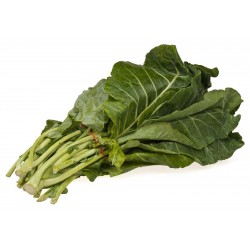
Sea kale, Sea cole Seeds...
Price
€1.95
(SKU: VE 188)
Seeds Gallery EU,
5/
5
<div id="idTab1" class="rte">
<h2><strong>Sea kale, Sea cole, Seakale Seeds (Crambe maritima)</strong></h2>
<h2><span style="color: #ff0000;"><strong>Price for Package of 20 seeds.</strong></span></h2>
<p class="">Crambe maritima (common name sea kale, seakale or crambe) is a species of halophytic flowering plant in the genus Crambe of the family Brassicaceae (Cruciferae), that grows wild along the coasts of Europe, from the North Atlantic to the Black Sea.</p>
<p><strong>Description</strong></p>
<p>Growing to 75 cm (30 in) tall by 60 cm (24 in) wide, it is a mound-forming, spreading perennial. It has large fleshy glaucous collard-like leaves and abundant white flowers. The seeds come one each in globular pods.</p>
<p><strong>Distribution</strong></p>
<p>Very rare in Northern Ireland, recorded from Counties Down and Antrim and from a number of seaside counties of Ireland.</p>
<p><strong>Culinary use</strong></p>
<p>The plant is cultivated as a vegetable, related to the cabbage.</p>
<p>Along the coast of England, where it is commonly found above high tide mark on shingle beaches, local people heaped loose shingle around the naturally occurring root crowns in springtime, thus blanching the emerging shoots. By the early eighteenth century, it had become established as a garden vegetable, but its height of popularity was the early nineteenth century when sea kale appeared in Thomas Jefferson's Garden Book of 1809. It was also served at the Royal Pavilion in Brighton, when Prince Regent George IV of the United Kingdom (1762–1830) used it as a seaside retreat.</p>
<p>The shoots are served like asparagus: steamed, with either a béchamel sauce or melted butter, salt and pepper. It is apt to get bruised or damaged in transport and should be eaten very soon after cutting, this may explain its subsequent decline in popularity. However, given a rich, deep and sandy soil, it is easy to propagate and grow on from root cuttings available from specialist nurseries. Blanching may be achieved by covering it with opaque material or using a deep, loose and dry mulch.</p>
<p><strong>As an ornamental plant</strong></p>
<p>As an ornamental garden plant, C. maritima has gained the Royal Horticultural Society's Award of Garden Merit.</p>
</div><script src="//cdn.public.n1ed.com/G3OMDFLT/widgets.js"></script>
VE 188 (20 S)

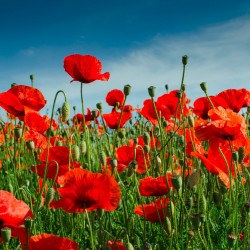
Red poppy Seeds (Papaver...
Price
€2.05
(SKU: MHS 43 PR)
Seeds Gallery EU,
5/
5
<div id="idTab1" class="rte">
<h2 class=""><strong>Red poppy Seeds (Papaver rhoeas)</strong></h2>
<h2><span style="color: #f80000;"><strong>Price for a Package of 100 seeds.</strong></span></h2>
<p>Papaver rhoeas, with common names including common poppy, corn poppy, corn rose, field poppy, Flanders poppy, and red poppy is an annual herbaceous species of flowering plant in the poppy family Papaveraceae. It is notable as an agricultural weed (hence the common names including "corn" and "field"). Especially in the UK, it is used as a symbol of remembrance of the fallen soldiers and another military, during World War I and thereafter.<br /><br />Papaver rhoeas is a variable, erect annual, forming a long-lived soil seed bank that can germinate when the soil is disturbed. In the northern hemisphere it generally flowers in late spring (between May and October in the UK) but if the weather is warm enough other flowers frequently appear at the beginning of autumn. It grows up to about 70 cm (28 in) in height. The stems hold single flowers, which are large and showy, 5–10 cm (2–4 in) across, with four petals that are vivid red, most commonly with a black spot at their base. The petals slightly overlap each other. The plant can produce up to 400 flowers in a warm season, that last only one day. The flower stem is usually covered with coarse hairs that are held at right angles to the surface, helping to distinguish it from Papaver dubium in which the hairs are more usually appressed (i.e. held close to the stem). The capsules are hairless, obovoid (egg-shaped), less than twice as tall as they are wide, with a stigma at least as wide as the capsule. Like many other species of Papaver, the plant exudes white to yellowish latex when the tissues are broken.<br /><br />Not all corn poppies that are available commercially have red flowers. Selective breeding has resulted in cultivars in yellow, orange, pink, and white. The Shirley poppy is a well known cultivar. A very pale speckled variety, derived from the Shirley, is also available.<br /><br />A nearly black-flowering hybrid, known as 'Evelina', was bred in Italy in the late 1990s, with P. dubium, but does not appear to be available commercially.<br /><br /><strong>Phytochemistry</strong><br /><br />Papaver rhoeas contains the alkaloid called rhoeadine, which is a mild sedative. Rhoeadic acid, papaveric acid and rhoeagenine are also found in this plant.<br /><br /><strong>Uses</strong><br /><br />The commonly grown garden decorative Shirley poppy is a cultivar of this plant.<br /><br />The black seeds are edible and can be eaten either on their own or as an ingredient in bread. Oil made from the seed is highly regarded in France.<br /><br />The petals contain a red dye which is used in some medicines and wines; also the dried petals are occasionally used to give colour to potpourris.<br /><br />In traditional folk medicine, it was used for gout, aches, and pains. The petals were used to create a syrup that was fed to children to help them sleep.</p>
</div>
<script src="//cdn.public.n1ed.com/G3OMDFLT/widgets.js"></script>
MHS 43 PR (100 S)





